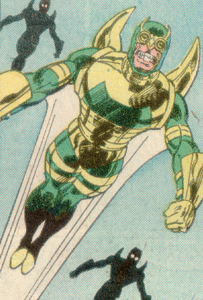 The Vigilante was originally a Western hero, whose 1941 debut came in Action Comics–the same title whose first issue had introduced Superman three years earlier. He was popular enough at one point in the late 1940s to inspire a series of film serials, and his popularity continued for a while after the Golden Age of superheroes came to a close (the Western genre was huge in the 1950s and 1960s, something we of the younger set may not realize).
The Vigilante was originally a Western hero, whose 1941 debut came in Action Comics–the same title whose first issue had introduced Superman three years earlier. He was popular enough at one point in the late 1940s to inspire a series of film serials, and his popularity continued for a while after the Golden Age of superheroes came to a close (the Western genre was huge in the 1950s and 1960s, something we of the younger set may not realize).
In the 1980s, Marv Wolfman and George Perez revived and updated the character in the pages of their mega-popular New Teen Titans. Now a disillusioned New York district attorney named Adrian Chase who decides to take justice into his own hands, the Vigilante was basically DC’s answer to Marvel Comics’s Punisher, with shades of Daredevil thrown in (Marvel would later return the favor by ripping off Wolfman and Perez’s Deathstroke in the form of Deadpool).
Initially, the Vigilante took pains not to kill his victims, but with a few years he was almost as brutal as the Punisher. His solo series was very dark, even for the time, with one particularly memorable storyline by Alan Moore featuring murder, prostitution, drug use, child molestation, and one very nasty death-by-tire. As time went on Chase became increasingly unhinged, even killing police officers who got in his way. In issue #50, weighed down by guilt, Chase shot himself. Brutal, yes, but probably a more believable end for this sort of personality than the Punisher’s endless war.
Given his grim, unheroic end, the Adrian Chase version of the Vigilante has been largely forgotten in DCU lore, though the Vigilante name and M.O. has been resurrected several times (most recently in the pages of Nightwing and Teen Titans). Chase has certainly never been honored with an action figure by Hasbro or DC Direct, though Kenner had planned one for the Super Powers line in the mid-’80s before the line was canceled (and before Chase offed himself).
But now, Mattel and the Four Horsemen have given us a fine version of the late, tragic Mr. Chase. With him in your hand, perhaps you can weave a new ending for his story–one filled with blazing guns, heroic gestures, and not nearly as much murder and suicide. But the lesson here is clear: don’t be a district attorney in the DC Universe. You’ll end up murderous, psychotic, disfigured and probably dead. Get out while you can, Kate Spencer! (more…)
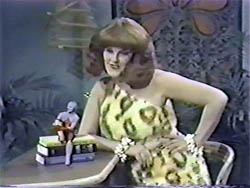 How do you solve a problem like Giganta? For Mattel, the answer was to split her into a number of smaller parts and package her with the rest of DCUC Wave 8.
How do you solve a problem like Giganta? For Mattel, the answer was to split her into a number of smaller parts and package her with the rest of DCUC Wave 8.
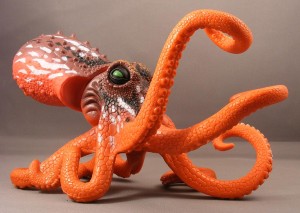
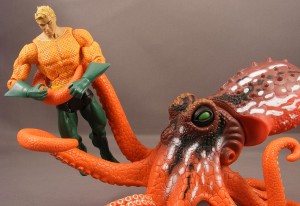

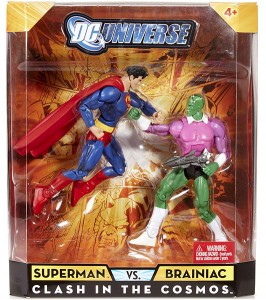
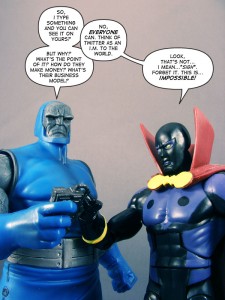
 The Vigilante was originally a Western hero, whose 1941 debut came in Action Comics–the same title whose first issue had introduced Superman three years earlier. He was popular enough at one point in the late 1940s to inspire a series of film serials, and his popularity continued for a while after the Golden Age of superheroes came to a close (the Western genre was huge in the 1950s and 1960s, something we of the younger set may not realize).
The Vigilante was originally a Western hero, whose 1941 debut came in Action Comics–the same title whose first issue had introduced Superman three years earlier. He was popular enough at one point in the late 1940s to inspire a series of film serials, and his popularity continued for a while after the Golden Age of superheroes came to a close (the Western genre was huge in the 1950s and 1960s, something we of the younger set may not realize).
 Due to the heavy re-use of body parts in DCUC, you occasionally get a really boring figure. Wave 5’s Atom, while an important character, was one example. And now, we have Commander Steel.
Due to the heavy re-use of body parts in DCUC, you occasionally get a really boring figure. Wave 5’s Atom, while an important character, was one example. And now, we have Commander Steel.